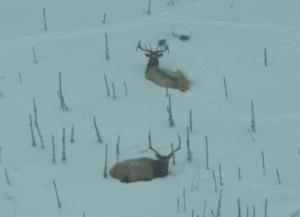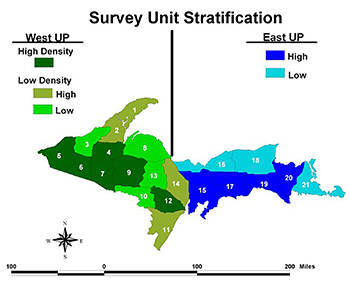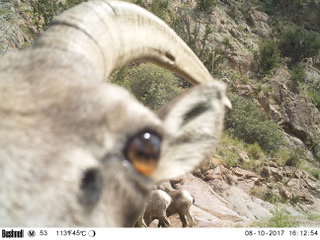Elk monitoring in Michigan starts from above
 The Department of Natural Resources just finished its 2016 elk survey after nine days of flying in northern Michigan.
The Department of Natural Resources just finished its 2016 elk survey after nine days of flying in northern Michigan.
“Every other year, we conduct the survey by counting elk from an airplane,” said DNR Field Operations Manager Brian Mastenbrook. “Because elk are so large and typically found in groups, they are a great animal to count by airplane. An airplane allows us to cover large areas much quicker than any other method, and it gives us a confident estimate of elk.”
Two airplanes flew transects, or grids, over the entire elk range, which is in the northeast Lower Peninsula from Indian River east to Onaway, south to Atlanta and back west to Gaylord. The planes covered 88 transects – each 2 miles wide by 6 miles long – flying more than 5,000 miles.
“This is an extremely effective survey that provides great input for our management recommendations,” said Mastenbrook. “We’ve used this survey to generate population estimates since 2008.”
In recent survey years, population estimates of elk were 1,040 (2012) and 668 (2014).
A total of 1,002 individual elk were counted during the 2016 survey, giving a population estimate of 1,371 elk. The number of animals seen during an aerial survey is always an underestimate, because not all can be seen from the airplane. Although winter is the best time for an aerial survey because elk stand out against the white snow and leaves are off the trees, they still can be missed among dense conifer trees, which do not drop their needles annually. Therefore, to provide a more accurate estimate of elk, a correction factor is used. The correction factor, developed by running experimental trials on radio-collared elk, is now the standard practice among wildlife managers across the nation.
 Mastenbrook said part of managing an animal’s population is having clear goals, and today’s elk management goals are to balance the population with the available habitat, or food and cover required; use hunting as the primary method of population control; and improve the public’s understanding of elk. He said the elk population goal is 500 to 900 animals in order to reduce crop damage, disease concerns and forest regeneration, while maximizing recreational opportunities.
Mastenbrook said part of managing an animal’s population is having clear goals, and today’s elk management goals are to balance the population with the available habitat, or food and cover required; use hunting as the primary method of population control; and improve the public’s understanding of elk. He said the elk population goal is 500 to 900 animals in order to reduce crop damage, disease concerns and forest regeneration, while maximizing recreational opportunities.
“Michigan has come a long way with elk management,” Mastenbrook said. “Elk had disappeared from Michigan in the late 1800s, and today’s population is a result of seven elk released in 1918, just outside of Wolverine. Even though elk are found only in the northern Lower Peninsula, they are an important part of Michigan’s natural resources history and also a great conservation success story.”
Currently elk can be viewed throughout the Pigeon River State Forest area. Visit Michigan.gov/elk for more information.
To learn more, watch a short video about the 2016 elk survey.





